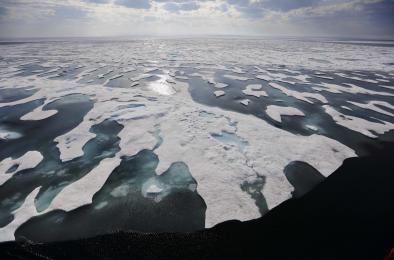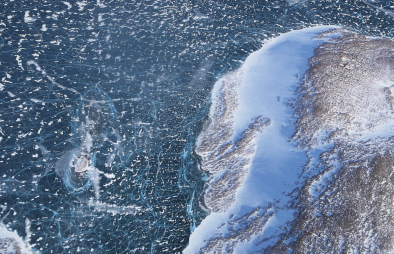Science Source
Twenty-first century Arctic climate change
- Summarizes the twenty-first-century Arctic climate simulated by NCAR’s Community Climate System Model, version 4 (CCSM4)
- Finds the model simulates a much warmer, wetter, cloudier, and stormier Arctic climate with considerably less sea ice and a fresher Arctic Ocean under a strong radiative forcing scenario
- Holds the high correlation among the variables composing these changes—temperature, precipitation, cloudiness, sea level pressure (SLP), and ice concentration—suggests that their close coupling collectively represents a fingerprint of Arctic climate change
- Finds that despite more global warming in CCSM4, Arctic changes are generally less than under comparable greenhouse forcing in CCSM3, as represented by Arctic amplification (16% weaker) and the date of a seasonally ice-free Arctic Ocean (20 years later)
- Finds that autumn is the season of the most pronounced Arctic climate change among all the primary variables
- Finds the SLP response exhibits a significant trend toward stronger extreme Arctic cyclones, implying greater wave activity that would promote coastal erosion
- Finds the region shrinks by about 40% during the twenty-first century, in conjunction with a nearly 10-K warming trend poleward of 70°N—based on a commonly used definition of the Arctic (the area encompassing the 10°C July air temperature isotherm)
- Finds that despite this pronounced long-term warming, CCSM4 simulates a hiatus in the secular Arctic climate trends during a decade-long stretch in the 2040s and to a lesser extent in the 2090s
Related Content
Science Source
| Bulletin of the American Meteorological Society
More-Persistent Weak Stratospheric Polar Vortex States Linked to Cold Extremes
Marlene Kretschmer, Dim Coumou, Laurie Agel et al
Headline

Jul 31, 2017 | PBS NewsHour
Arctic journey shows the glaring effects of climate change
Headline

Jul 28, 2017 | Washington Post
How loss of Arctic sea ice further fuels global warming
Headline

Jul 17, 2017 | Bloomberg
How a Melting Arctic Changes Everything: Part I


